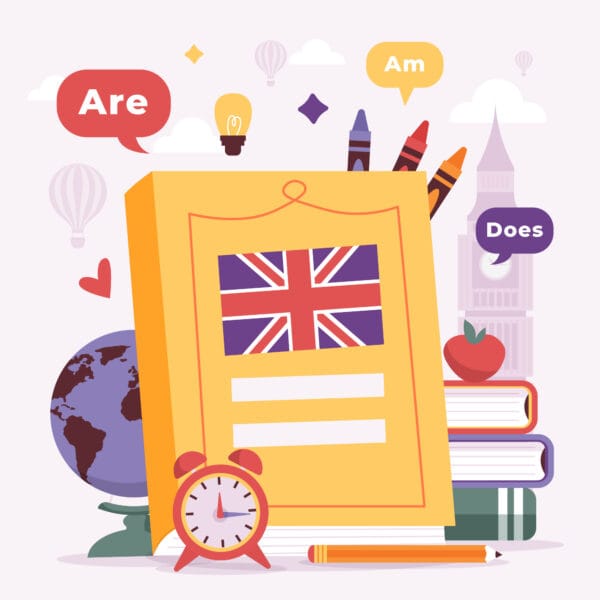Table of Contents
ToggleHow to Never Run Out of Words:
All Essential Conversations for English Learners! …by Mrs. Sounia Vatts
Imagine stepping into a bustling café, where the aroma of coffee fills the air, and the lively chatter of patrons surrounds you. You overhear a conversation about a recent movie, a local event, or even the best books of the year. You want to jump in, share your thoughts, and connect, but you’re worried about finding the right words. That’s where understanding how to never run out of words comes into play. In this article, we’ll explore essential daily life English conversations and provide you with the tools you need to navigate social interactions confidently. Let’s turn those moments of uncertainty into engaging conversations!

Thesis Statement:
This article explores essential English phrases and sentences for daily conversations, designed to help learners communicate confidently and naturally in various situations.
By understanding and practicing these commonly used expressions, readers can improve their fluency and respond appropriately in real-life interactions.
Purpose of the Article:
To provide readers with practical, everyday English phrases that can be applied across various social and professional situations, enhancing both fluency and ease in conversation. The article aims to be a valuable resource for anyone seeking to communicate more naturally and confidently in English.
Daily Life English Phrases for Confident Communication
1. Expressing Necessity and Indifference
“No need now.”
Use this phrase to say that something isn’t necessary at the moment.“Whose fault is it?”
This question is used when trying to understand who is responsible when something goes wrong.“I don’t care.”
A powerful phrase to show indifference or lack of concern about a particular issue.
2. Punctuality and Time Management
“You’re late again.”
Use this to point out if someone is repeatedly arriving late.“I lost track of time.”
This phrase is handy when you lose awareness of time, often leading to being late.“It’s gonna take some time.”
A helpful way to set realistic expectations when something requires patience.
3. Expressing Emotions and Feelings
“I’m stuck.”
Say this when you feel trapped or unable to make progress in a situation.“I had a bad day today.”
A simple way to let others know you’re feeling down because of a rough day.“I can’t keep on doing this.”
A way to express feeling overwhelmed or exhausted by a situation.“I struggled a lot.”
Use this phrase to communicate that you’ve faced a challenging experience.“I’m stunned.”
A short way to express shock or surprise.
4. Asking and Responding in Conversations
“How was it?”
A question to show interest in someone’s recent experience.“What happened?”
Ask this to get more details when you sense something unusual.“Why didn’t you tell us before?”
This is used when you want to know why someone didn’t inform you earlier about something important.“I don’t know why they do that.”
Use this phrase when you’re puzzled by someone’s behavior or decisions.
5. Commands and Requests
“Stay where you are.”
This direct request is used to ask someone to remain in their current location.“Do not move!”
A stronger command often used to emphasize the importance of staying still.“I told you to keep quiet!”
Use this phrase as a reminder to someone who’s not following instructions.“Stay still for one minute.”
A polite way to ask someone to stay in one place briefly.
6. Giving Explanations and Instructions
“That’s how you do it.”
A simple phrase to demonstrate or explain how to accomplish a task.“It could be…”
Use this phrase to speculate or make an educated guess about a situation.
7. Sharing Encouragement and Positivity
“But it will get better later.”
An optimistic phrase to reassure someone that difficult times are temporary.“There’s nothing to worry about.”
A comforting phrase to ease someone’s concerns or anxieties.“Isn’t this fun?”
Use this to highlight an enjoyable moment and include others in your excitement.“It’s a good thing, isn’t it?”
A way to reflect on something positive and encourage agreement.
8. Noting Strange Behavior or Situations
“You’re acting strange.”
This phrase is used when someone is behaving unusually or out of character.“What a mess you made!”
A lighthearted or critical phrase for when someone has created a disorganized situation.
9. Building Rapport and Connection
“Friends don’t lie.”
A casual way to reinforce honesty and trust within friendships.“I love her like a mother.”
Use this heartfelt phrase to express deep affection for someone, likening it to the bond with a mother.“Convincible, why would he lie to me?”
Expresses surprise and disbelief if someone you trust behaves unexpectedly.
10. Reminding Others and Setting Boundaries
“I need to see him.”
A clear way to let others know you want to meet or speak with someone specifically.“I need to tell you something.”
A phrase that signals you have important information to share.“Is this a joke to you?”
Use this when you want to remind someone of the seriousness of a situation if they appear too casual.“I’ve done my part, now you do yours.”
A respectful reminder that both sides share responsibility in completing a task.
Practical Scripts for Everyday English Conversations
1. Expressing Necessity and Indifference
Example for “No need now.”
Case: Sarah offers to help her colleague David finish his report. David is ahead of schedule and replies, “No need now, but maybe later. Thanks!” Sarah understands that David has things under control for the time being.Example for “I don’t care.”
Case: During a team meeting, someone brings up an old issue that doesn’t affect the current project. Tired of rehashing the topic, John says, “I don’t care. Let’s focus on what’s ahead.” This response signals that John wants to prioritize moving forward.
2. Punctuality and Time Management
Example for “You’re late again.”
Case: Jamie arrives late to her third consecutive meeting with her friend Mia. Mia, feeling frustrated, says, “You’re late again, Jamie.” Jamie realizes she’s been keeping Mia waiting too often and apologizes.Example for “It’s gonna take some time.”
Case: Alex is helping his friend Liam fix a computer issue, but it’s proving complicated. Alex says, “It’s gonna take some time, so hang tight.” Liam understands he’ll need to be patient while Alex works on it.
3. Expressing Emotions and Feelings
Example for “I’m stuck.”
Case: Kayla is working on a difficult math problem. She tells her study partner, “I’m stuck. Can you help me figure this out?” This signals to her partner that she needs assistance moving forward.Example for “I had a bad day today.”
Case: After a tough day at work, Emma joins her friend for coffee and immediately says, “I had a bad day today.” Her friend listens as Emma vents, providing her with some relief.Example for “I’m stunned.”
Case: When Ravi’s colleague shows him an impressive report she completed, he says, “Well, I’m stunned!” His colleague is thrilled to hear he’s impressed with her hard work.
4. Asking and Responding in Conversations
Example for “What happened?”
Case: Jenny’s friend walks into the room looking upset. Jenny immediately asks, “What happened?” This shows her friend that Jenny is concerned and ready to listen.Example for “Why didn’t you tell us before?”
Case: In a team meeting, Sarah shares a problem that she’s been dealing with for weeks. Her manager asks, “Why didn’t you tell us before?” This signals that the team could have helped had they known earlier.
5. Commands and Requests
Example for “Stay where you are.”
Case: Jane’s little brother runs ahead at a busy amusement park. Concerned for his safety, she calls out, “Stay where you are!” He stops, allowing her to catch up and stay together.Example for “Stay still for one minute.”
Case: While taking a family photo, the photographer says, “Stay still for one minute, please!” This helps everyone understand that their cooperation will lead to a great picture.
6. Giving Explanations and Instructions
Example for “That’s how you do it.”
Case: Emily teaches her younger sibling how to tie shoelaces. After demonstrating the steps, she says, “That’s how you do it!” Her sibling now knows the technique.Example for “It could be…”
Case: During a discussion on current events, Alex says, “It could be that the market will improve next year.” This shows he’s sharing a prediction, without guaranteeing it as fact.
7. Sharing Encouragement and Positivity
Example for “But it will get better later.”
Case: Maria is feeling down about her job. Her friend reassures her, saying, “But it will get better later. Just hang in there.” This optimistic response lifts Maria’s spirits.Example for “There’s nothing to worry about.”
Case: On a flight with turbulence, the flight attendant tells the passengers, “There’s nothing to worry about.” Passengers are reassured that they are safe.
8. Noting Strange Behavior or Situations
Example for “You’re acting strange.”
Case: When Claire notices her normally cheerful friend being unusually quiet, she gently asks, “You’re acting strange. Is everything okay?” Her friend feels comfortable sharing that something’s on her mind.Example for “What a mess you made!”
Case: After his kids finish a messy art project, Tom laughs and says, “What a mess you made!” The kids giggle, understanding their creativity is appreciated—even if it was a bit chaotic.
9. Building Rapport and Connection
Example for “Friends don’t lie.”
Case: Anna and her best friend are joking around, but Anna senses her friend isn’t being entirely honest about a story. She laughs and says, “Friends don’t lie!” They both laugh, and her friend admits she was exaggerating.Example for “I love her like a mother.”
Case: Talking about her mentor, Sophia says, “I love her like a mother.” This shows others the deep respect and affection Sophia has for someone who’s supported her.
10. Reminding Others and Setting Boundaries
Example for “I need to tell you something.”
Case: Marco pulls his friend aside and says, “I need to tell you something.” His friend understands immediately that Marco wants to share something important.Example for “Is this a joke to you?”
Case: During a project meeting, Neil realizes a teammate isn’t taking things seriously. Frustrated, Neil asks, “Is this a joke to you?” This question helps his teammate realize the importance of their work.

Daily Life English Conversation Topics
- Movies and TV Shows: “Have you seen any good movies recently? I just watched Fantastic Four—it was awesome!”
- Food and Cooking: “What’s your favorite dish to cook? I love experimenting with new recipes!”
- Travel: “Do you have any travel plans coming up? I’m hoping to visit Manali next year.”
100 Short English Conversations
Creating 100 short English conversations can seem daunting, but it’s all about starting with the basics. Focus on simple interactions, like ordering food, asking for directions, or discussing your plans for the weekend. For a comprehensive list, check out our Everyday Conversation PDF.
Daily Life English Conversation Questions
To spark engaging discussions, here are some daily life English conversation questions:
- “What was the highlight of your week?”
- “If you could visit any place in the world, where would you go?”
- “What’s a skill you’d love to learn?”
Daily Life English Conversation for Students
Students can greatly benefit from practicing daily conversations in English. Here are some tips:
- Role-Playing: Practice conversations with classmates using real-life scenarios.
- Language Exchange: Partner with a native speaker to enhance your speaking skills.
- Discussion Groups: Join clubs or online forums where English learners share their thoughts.

Practical Resources
For those looking for structured practice, consider downloading our Daily Conversation in English for Speaking PDF. It offers a variety of dialogues and scenarios to help you become more fluent.
Engaging with English Conversation Dialogues
Practicing with English conversation dialogues can improve your speaking skills. Here are a few examples to try:
- At a Restaurant
- “I’d like to order the chicken salad, please. What do you recommend for dessert?”
- In a Store
- “Excuse me, can you help me find the books section? I’m looking for a novel by Enid Bliton.”
Enhancing Fluency with Essential English Phrases
✨ Ready to transform your daily English conversations? ✨ Start using these phrases today and see your confidence soar! If these tips made a difference, don’t keep them to yourself—share this post with friends on the same journey! 🌍💬
💬 Tell us your favorite phrase! Drop a comment below with the expressions you loved or situations where these would come in handy. And don’t forget—subscribe for more tips that bring you closer to fluency! Let’s master English together—one powerful conversation at a time! 📚🗣️
Conclusion:
Mastering everyday English conversations is essential for building confidence and creating meaningful connections. By exploring essential phrases and engaging in daily life English conversations, you’ll find that speaking English can become second nature. So, whether you’re discussing the weather or sharing your latest travel adventures, remember that every small step counts. Start practicing these phrases today, and watch your fluency grow.
Ready to dive deeper into the world of English conversations? Don’t forget to check out our other resources on Daily Life English Conversation Topics and share this post with fellow learners. Let’s make every conversation an opportunity to connect and communicate!
About The Author
Mrs. Sounia Vatts is a dynamic educator with a rich background in innovative teaching and curriculum development. With a career spanning over a decade, she has a knack for inspiring students and igniting their passion for learning. Sounia is known for her creative approaches to education, utilizing technology and interactive methods to make lessons engaging and memorable. Her dedication to student growth and her ability to foster a supportive classroom atmosphere have earned her admiration from both students and colleagues alike.













































